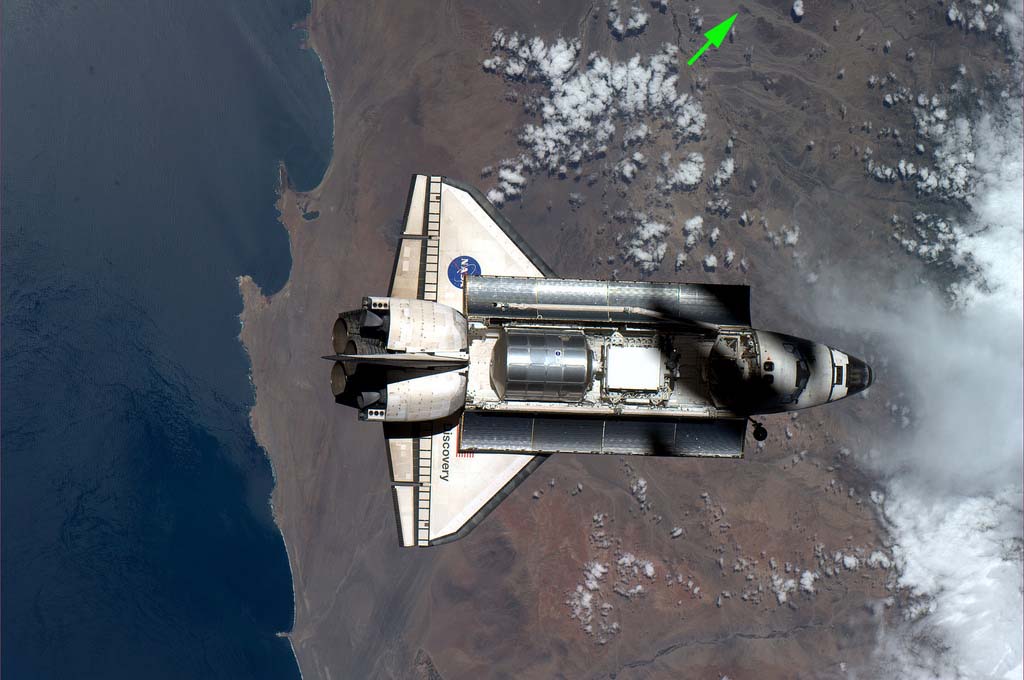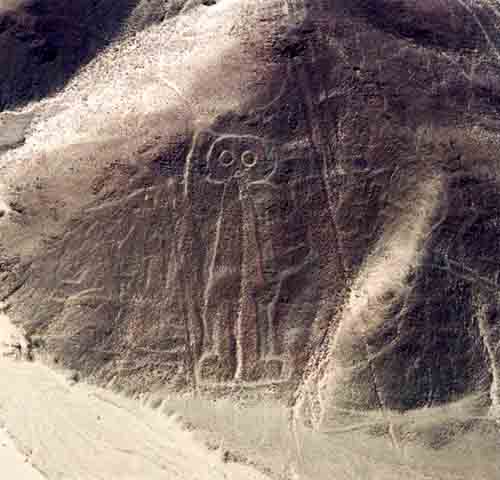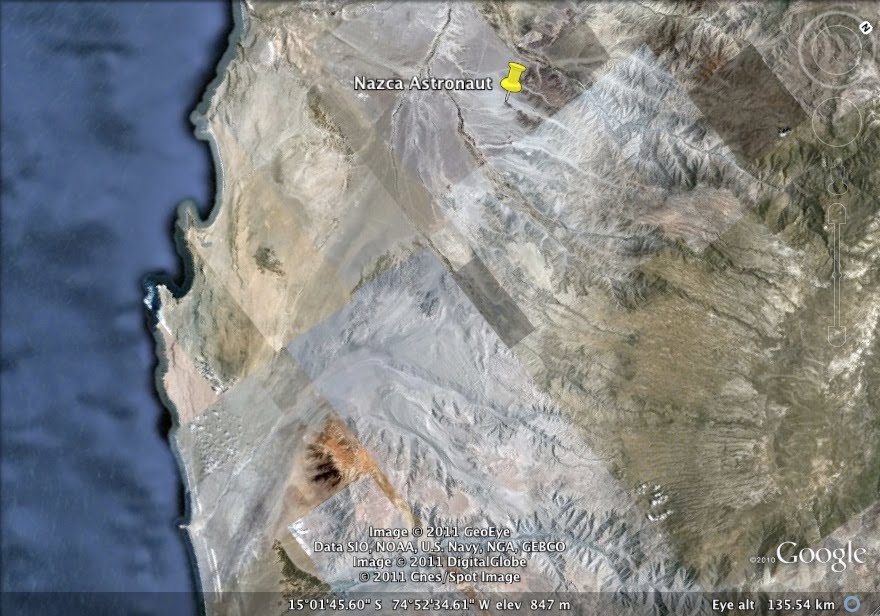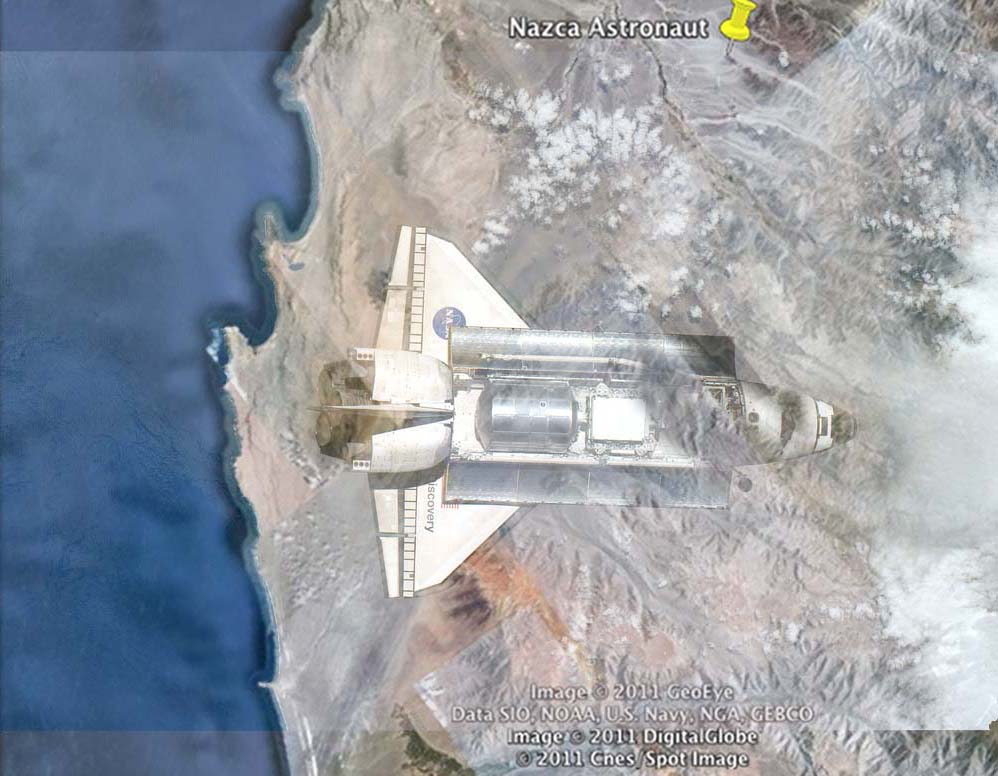Indeed.
Here is the picture. (Credit to NASA.) The shadow on Discovery is actually being cast by the ISS. A much better description of it all can be found in the original BA entry. For now, ignore the arrow. Click to make it bigger:

So obviously, this is already pretty cool. But there's more!
The insightful readership of Bad Astronomy was quick to point out that the coastline seen below the shuttle belongs to Peru. This got me thinking about the Nazca lines. The lines, of course, are shapes made in the desert by the ancient Nazca people that can only be fully appreciated from the air. If they're news to you, take a second to wiki them. They're cool.
Many are simple geometric figures (if there is anything simple about carving giant shapes out of the earth, keeping the lines razor-straight, all the while engineering entirely from the ground what you will never be able to witness yourself). The most famous of them, however, are more familiar shapes: a monkey, hands, a tree, a whale, etc. There are also some more cryptic ones. One of which is "the astronaut":

-I got the photo from garvandwane, assumably run by Garv and Wane?
This little guy, snug in his bubble helmet with a hand raised to the stars, has inspired some colorful theories about aliens making contact with the Nazcans.
Sadly, they are exceedingly unlikely. Still, he is there, and has been for hundreds of years.
Here are the Google Earth coordinates for the astronaut: 14º44'42.79" S 75º04'47.08"W. Plug those into google maps, scroll around a little bit to find the green arrow, and take a look. Here is a zoomed out picture from google earth that includes the Peruvian coastline:

The thumbtack is marking the Nazca astronaut. The astute among you might have figured that out from the fact that it says " Nazca Astronaut." Click to enlarge, look at the white lines on either side of it, and take note of the little oblong brown speck that it is sitting on. Now, scroll back up and look at the green arrow in Paulo's picture of discovery.
Go ahead, look!
It's the same mountain! Er, hill.
To further illustrate the point, I've taken the liberty of overlaying the two images. I had to do a wee bit of stretching to get the coast to match up, but not much, and it's still not perfect. But you get the idea. Like other things you might have recent experience with, this will get bigger when you click it:

Pret-tay, prettay sweet.
So on Saturday, Paulo peered out of a window on the ISS and took a picture of Discovery, as both fell together towards the horizon. They were moving at a speed 17,000 miles per hour. And at the instant the shutter opened, the Nazca astronaut could have looked into space and seen a NASA astronaut looking back.